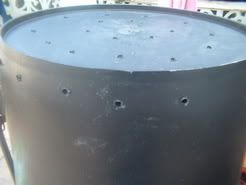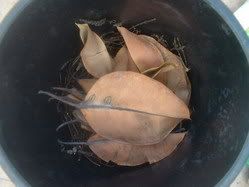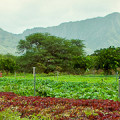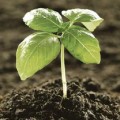The benefits of creating your own compost and the advantages it can bring to your garden are well worth the effort. As well as providing your plants with a wonderful rich source of nutrients it is a great way to recycle household waste. Recycling the organic waste of a household into compost allows us to return badly needed organic matter to the soil and in doing so we participate in nature’s cycle, not to mention cutting down on garbage going into burgeoning landfills. But the greatest thing of all is that you will create unsurpassable compost and it will be absolutely free.If you don’t have the space required for a compost heap then there is an alternative in the form of a compost bin. These can be bought as commercially produced bins but can be expensive (and I’ve yet to find somewhere locally that sells them) so here is a step by step guide on how to make your own at a fraction of the price.
You will need:
* 1 10 gallon bucket
* 1 cheap plastic dish to catch drainage ( I improvised and used what I had to hand – an old drawer)
* Dried hay, leaves or grass clippings
* 1 small bag of potting soil
* kitchen and garden refuse
* Garden fork



Drill holes around the bottom of the bucket. Line the bottom of the bucket with dried hay, leaves and/or clippings to a depth of about 1″ (this is your drainage). The leaves were crumbled after the photo was taken – I just wanted to show how big the leaves are round where I live!
Next, layer the same depth of soil. As you acquire kitchen or garden refuse, toss it right on top and cover with a thin layer of dried material, then a layer of soil, as if creating a lasagna. Water lightly. The hay/leaves/clippings layer provides excellent drainage and organic matter. When the bucket becomes about half full (about 3-4 weeks) turn ingredients with a spade and mix very well. Notice how the material looks, too wet – add dried material and water less, too dry – cut down on dried material increase soil and/or water. Now you will begin to mix about once per week to keep the microbiotic processes in motion. Continue layering as before, turn very well about once per month. You’ll know that the processes inside are continuing if the side of the bucket feels slightly warm to the touch. If it begins to smell, which it really shouldn’t I promise, you are either adding too little dried material or too much water, adjust accordingly and remember, the finer the material you put into your compost pile, the sooner it will break down into good rich compost. When the bucket becomes full. Set it aside to steep until the next growing season. Once a month, take a peak and mix the contents, mix well enough to bring the bottom to the top. As the weather cools to winter, you’ll need to turn it less and less often.3 to 6 months after starting the bin, you will have compost worthy of using in your garden.
Best Things to Add:
Green waste:
Vegetable scraps, fruit peelings and cores
Weeds (before they seed or flower as most heaps do not get hot enough to “cook” them)
Comfrey and Herbs are beneficial as a source of trace elements
Coffee Grounds
Tea Bags
Hair and fur
Animal manure (horse and cow are suitable)
Seaweed
Spent annuals from the garden, hanging baskets and containers
Brown waste:
Shredded paper, newspapers and un-coated cardboard.
Lawn Clippings
Dried leaves
Saw dust (untreated wood only)
wood shavings and chips (untreated wood only)
Wood ash
Hay or straw
Peat
Vacuum cleaner dust
Small Twigs and shredded hedge clippings
Crushed sea shells
Do not put: diseased plants, noxious weeds, cooked vegetables, meat, grease, fat, dairy products or large bones into your compost heap.





2 Comments
cookiem (8 comments)
March 20, 2008 at 7:28 amTreehugger,
What a wonderful post, thanks so much for the information! It’s hard for some folks without yards to find composting space! Thanks!
mothersson2002 (18 comments)
March 26, 2008 at 5:59 amI have a hill out back of my house that I throw my waste down except in the deep winter when the snow is too high to trudge through.